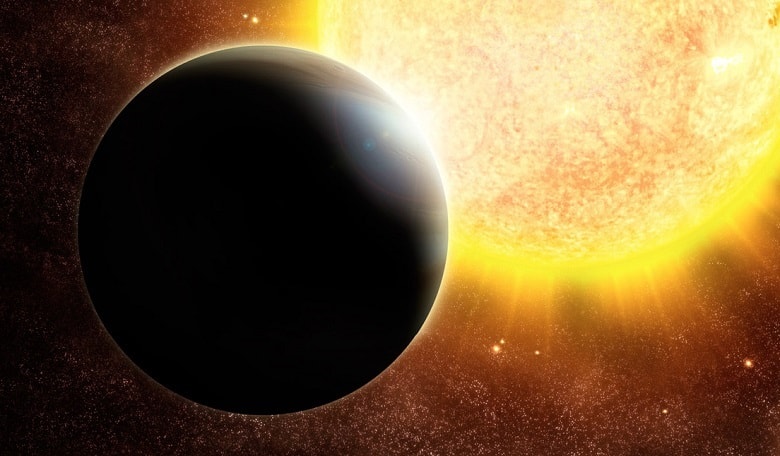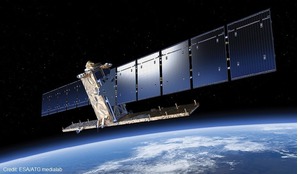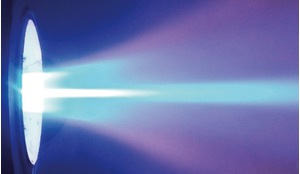Exoplanet 51 Peg B was discovered by observing slight and regular velocity changes in its host star’s spectral lines, caused by the planet’s gravitational effects as it orbited the star. This method, known as the radial velocity method, is one of three main ‘indirect’ techniques used to detect planets, the others being the astrometry and transit methods. The radial velocity method has been the prominent technique used by astronomers to find exoplanets and, whilst it is obviously successful in its application, this technique is limited because of the difficulties faced in detecting small, rocky worlds such as our own.
Astronomers can confidently detect the wobble of a star caused by the gravitational pull of a planet if it equates to 15 metres per second or more. Anything lower and the analysis becomes less certain. Earth, for example, only forces the Sun to move at 0.1 metres per second, thus it would remain undetected if relying on this method alone to find it.
The number of detected planets now runs into the thousands, with hundreds more awaiting further analysis, and these detections are not just limited to singular planets. A number of multi-planet systems have also been identified, such as 55 Cancri A.
 Formation of an accretion disc around a star
Formation of an accretion disc around a star
Located 41 light years away, 55 Cancri A is a yellow dwarf star, slightly less massive and therefore cooler and less luminous than our Sun. This system is known to have five planets, the innermost of which is 55 Cancri e, a super-Earth type planet which appears to exhibit extreme variations in brightness temperature, attributed by some to be characteristic of volcanic activity. 55 Cancri differs from our own Solar System in that the main star has a red dwarf companion; nonetheless, as our measurements become sensitive to lower masses, it is only a matter of time before astronomers find many more systems with a diverse arrangement of planets and stars. Perhaps even one that could be a copy of our own solar neighbourhood.
The number of detected planets now runs into the thousands, with hundreds more awaiting further analysis
But how are planetary systems formed and are there any differences in the way a nascent protoplanetary disc produces a system with one or two lonely objects, compared with an extra-solar system composed of a dozen contrasting planets?
In the beginning
Studies have shown that the observed properties of cloud cores with an embedded protostar are consistent with the formation of discs that can rival the size of the Solar System
The origins of a protoplanetary disc start in the relatively small fraction of gas that exists in dense, molecular clouds. These clouds are typically traced by species such as CO, 13CO and NH3, and observations of these molecules can provide information on the kinematic properties of the cloud, from the presence of rotation to infall and outflows. Small scale, dense ‘cores’ within the cloud can give rise to conditions suitable for the evolution of a protostar, where the surrounding material that is not accreted onto the evolving star will eventually settle out to produce a tell-tale flattened disc.
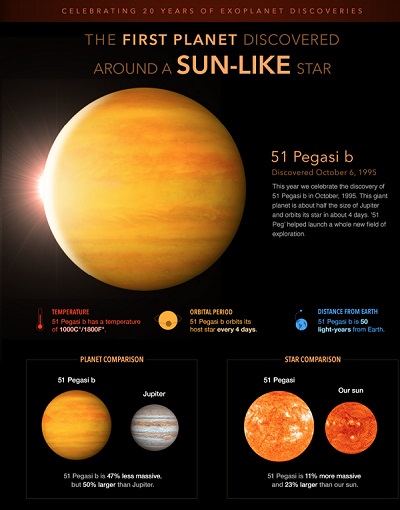
Studies have shown that the observed properties of cloud cores with an embedded protostar are consistent with the formation of discs that can rival the size of the Solar System and above, suggesting that such discs are initially quite massive. However, having such a high disc mass can induce certain problems for the stability of the system. “Instability is associated with the self-gravity of the disc. The disc has its own mass and hence it has its own gravitational force and its own dynamics are ruled by its own mass,” explains Antonio Hales, an Operations Astronomer based at the ALMA telescope in Chile who specialises in protoplaneary disc formation. “If a disc is not very massive then it won’t matter and the physics of the disc will be driven by the central object ie, the star.”
Some researchers are now suggesting that disc instability could be a viable mechanism for planet formation
However, protoplanetary discs have a lot to contend with in order to become established long enough to produce planets. It is not just time or a disc’s mass that dictates its chances of survival; its neighbours, or lack of them, also matter. Close binary stars (with a separation between 5 - 10 AU) are not conducive for disc stability, as each star wants a share of the gas and dust to aid in its own accretion processes. Accordingly, this limits the amount of material left to build planets. Solitary stars or binary stars whose companions are much further away (> 100 AU) thus have a higher fraction of discs surrounding them. Not only that, but stars with higher mass tend to have discs that dissipate faster. This is possibly due to the combination of higher accretion rates and/or a greater ionizing flux emanating from the central star, proving that in this instance, size does matter.
Analysing discs
The bulk of a protoplanetary disc mass is mostly made up of gas – molecular hydrogen – with dust only accounting for around one per cent of the total mass. However, observing the dust is much easier and it is via analysis of the dust continuum emission that much is gleaned about disc structures. Typically in the inner radii of a disc (~1 AU), the disc is optically thick and is characterised by near- and mid-infrared emission (NIR and MIR respectively). Conversely, at the cold outer disc, longer wavelength emission is usually observed.
Deviations to the expected NIR excess can give an indication as to apparent gaps in the disc. If a hole is present in the inner disc, a reduced level of NIR excess is detected. Similarly, if the hole is completely devoid of material, no detectable excess will be seen above the stellar photosphere. A reduction or lack of emission for both NIR and MIR excesses can be an indication of something different altogether.
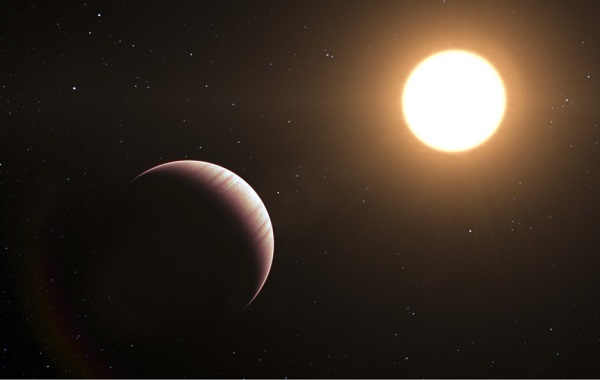 Artist’s impression of a ‘Hot Jupiter’
Artist’s impression of a ‘Hot Jupiter’
Observations with the Spitzer Space Telescope of discs lacking these two excesses indicate that the fledgling protostar is on its way to becoming a pre-main sequence star. Consequently accretion stops and the inner disc dissipates. Within 105 yrs it is suggested that the entire disc can be dispersed completely. This dispersal is thought to occur due to a photoevaporative wind generated by the central star. The wind opens up a gap that cuts off the inner disc from being resupplied by gas from outer reservoirs at larger radii and without a resupply of material, the inner disc drains on to the star, leaving the remaining gas at risk from direct illumination by UV radiation from the star. This radiation subsequently burns through the outer disc removing all remaining gas, providing a constraint on the time available for certain types of planet formation.
The exception to this are transition discs, observed to already have clean inner holes, and objects that are described as physically very flat or optically thin in the infrared. Accounting for around 20 per cent of the disc population, transition discs seem to be a function of age, with objects such as these found mostly in older star-forming regions and clusters. Nonetheless, transitions discs have been observed to have a wide range of spectral energy distributions (SEDs) and structures such as spiral arms and huge asymmetries in their outer discs. These asymmetries have been interpreted as large-scale dust traps (or vortices) that could play an important role in the formation of planetesimals and planets at large radii.
Building planets
The building blocks of planet formation start with tiny dust grains, that include components such as graphite, polycyclic aromatic hydrocarbons (PAHs) and magnesium (Mg)-rich and iron (Fe)-poor crystalline silicates, in particular forsterite and enstatite. Because the abundance of these species, relative to that of amorphous silicates, is far above the expected value for these grains in the interstellar medium, it is implied that significant grain processing occurred sometime in the early epoch of disc formation, either during the collapse of the molecular cloud core or in the accretion disc surrounding the young star.
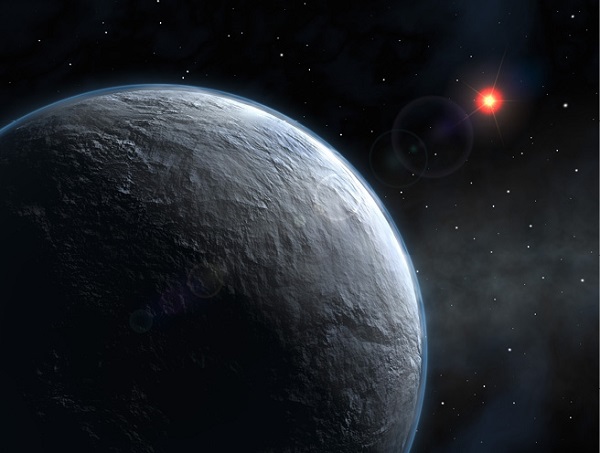 An ice exoplanet
An ice exoplanet
Grain survival is dependent on its proximity to the host star, where the temperature in the hottest, inner regions of the disc can reach 1000 K to 2000 K – enough to melt even refractory material. Once the dust is destroyed a ‘hole’ or cavity will be present due to the reduced opacity of the remaining material, though not all holes are formed in this manner. Cavities in a protoplanetary disk are often seen as tantalising sites for planet formation, but growing particles from millimetre-sized grains to metre-size objects gradually is an extremely difficult process.
Studies in both simulations and in the laboratory have identified two major hurdles to forming planetesimals in discs: radial drift and the inefficiency of grain growth via collisions.
JeanFrancois Gonzalez, a researcher who studies grain growth in protoplanetary discs at the Centre de Recherche Astrophysique de Lyon, France, said: “Tiny grains are tightly coupled to the gas, they are effectively glued to it, but the drag force between the gas and dust on intermediate size dust grains causes them to rapidly migrate out of the disc and consequently they are lost out of the system. Not only that but if the relative velocity of the colliding grains is too large, the grains will just shatter and not stick together.”
In recent observations of the HL Tau protoplanetary disc using the Atacama Large Millimetre/Submillimetre Array (ALMA), images have revealed a number of striking concentric, axisymmetric gaps around the nascent central star. It has been suggested that these cavities have been carved out by massive protoplanetary bodies caught in the act of forming planets. In response to these findings, Gonzalez and fellow researchers ran 3D hydrodynamical simulations in order to understand the evolution of the gas and dust in rings similar to those seen in HL Tau and to ascertain whether all gaps seen in protoplanetary discs are created by fledgling planets.
“Our models show that grains a few centimetres in size can grow fast enough to overcome the fast migrating regime. It is the first time we see such a decoupling of the grains from the gas, when fragmentation is taken into account. In this method, grains become insensitive to the gas-drag that affects intermediate dust grain sizes and hence they are not lost to the disc through rapid migration,” explains Gonzalez. Accordingly, the long-standing core accretion timescale conflict is overcome in these simulations.
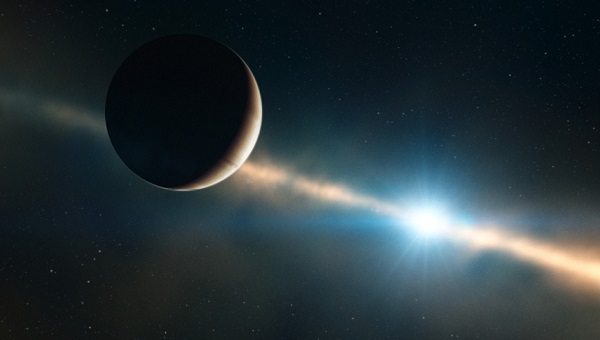 An artist’s impression showing how the planet inside the disc of Beta Pictoris may look
An artist’s impression showing how the planet inside the disc of Beta Pictoris may look
A consequence of the work by Gonzalez and his team is that a second cavity is created when a planet forms in the inner ring of a protoplanetary disc. “The second hole is formed as a result of a self-induced dust pile-up where a complex interplay between growth and migration induces dust self-accumulation. Basically, instead of the gas dragging the dust along, the dust gets very dense and the reverse happens – it is gas that is dragged by the dust instead,” he says.
This back-reaction of gas and dust is a key ingredient in producing an apparent gap that could be mistaken for a planet carving out a hole in the disc. “Finding rings is not enough,” warns Gonzalez. “It is a exciting prospect that rings are the result of planet formation, but our simulations suggest this is not always the case.”
The last two decades have seen a wealth of new observations hinting at the presence of protoplanetary bodies in the early stages of planet formation
Although core accretion was once regarded as the only mechanism responsible for building planets, it became clear that other methods were required to overcome the radial drift and inefficient grain growth problem. Consequently, some researchers are now suggesting that disc instability could be a viable mechanism for planet formation. “If a disc gets massive enough and creates instabilities, clumps will form that can lead to the formation of planets. One drawback is that we have yet to observe such a massive disc. It was hoped that observations of HL Tau would show some of these gravitational instabilities - spirals arms, massive clumps - but surprisingly, we didn’t see any of these features. We saw a well-defined, almost symmetric disk made of concentric rings,” says Hales.
If disc instability is not the cause of the cavities in HL Tau, then perhaps the gaps are the result of a self-induced dust pile-up? Hales, however, is still sceptical. “Features such as dust pile-ups and dust traps are created by the gas [in the disc], but you need to have significant amounts of gas for these features to occur and that is something we do not see in HL Tau – it does not have that much gas. You can’t induce a dust trap created by vortices in the gas, if there is not much gas,” he explains.
The way forward
The last two decades have seen a wealth of new observations, such as those of HL Tau, hinting at the presence of protoplanetary bodies in the early stages of planet formation but it is clear that a number of issues still persist. “One of the things we are trying to achieve with ALMA is to build up a census of discs at different evolutionary stages to ascertain, amongst other things, what happens to the disc as it dissipates - does it go into planets or does it go onto the star?” asks Hales. “What we are finding out is that like people, there are some statistical rules that apply, but all individuals appear to be different. It appears that all stars are different and that all discs are different,” he says. Finding out if the initial disc conditions are the actual driver that governs the evolution of a system will give researchers a lot to look for in the years ahead.





